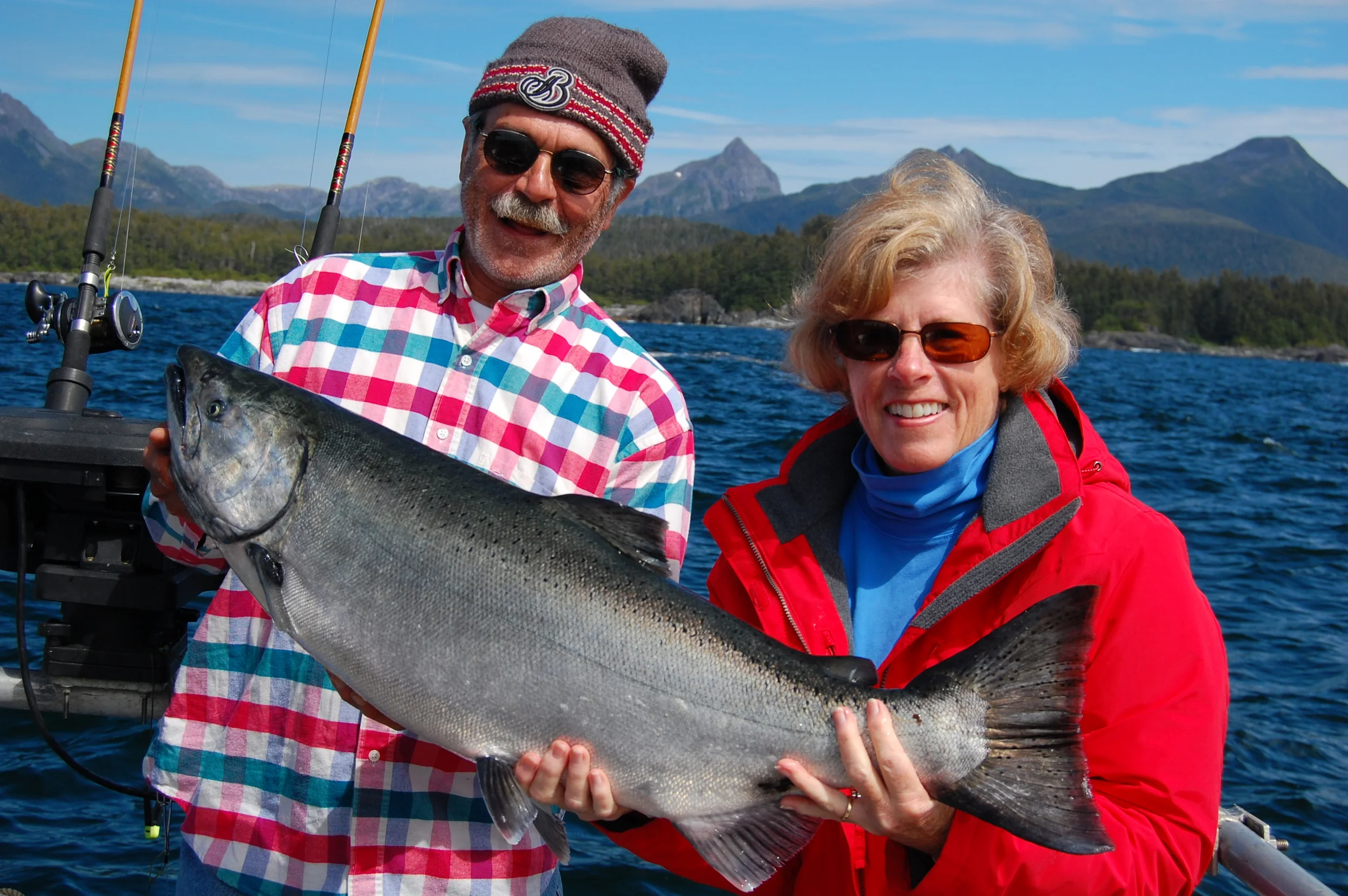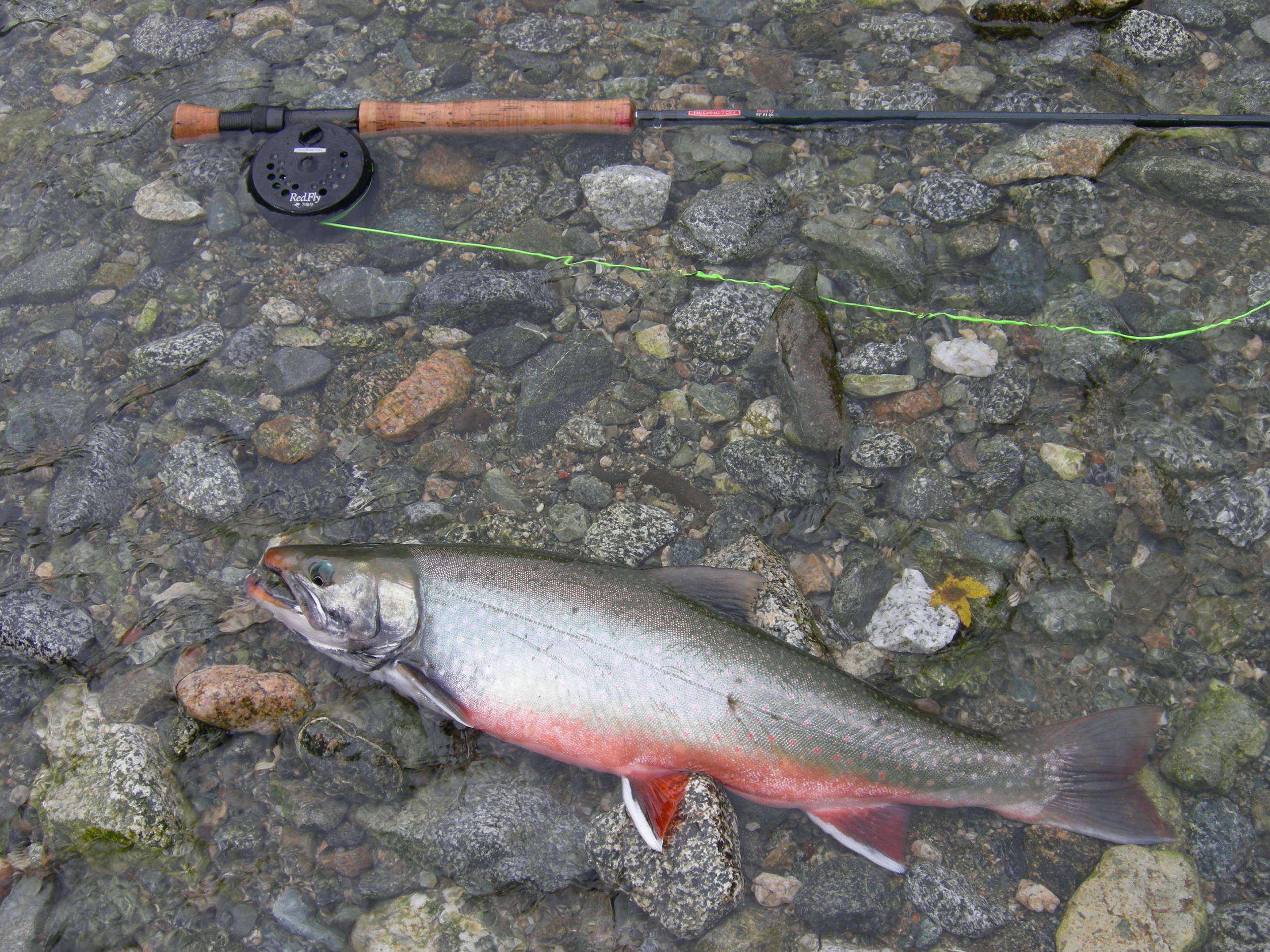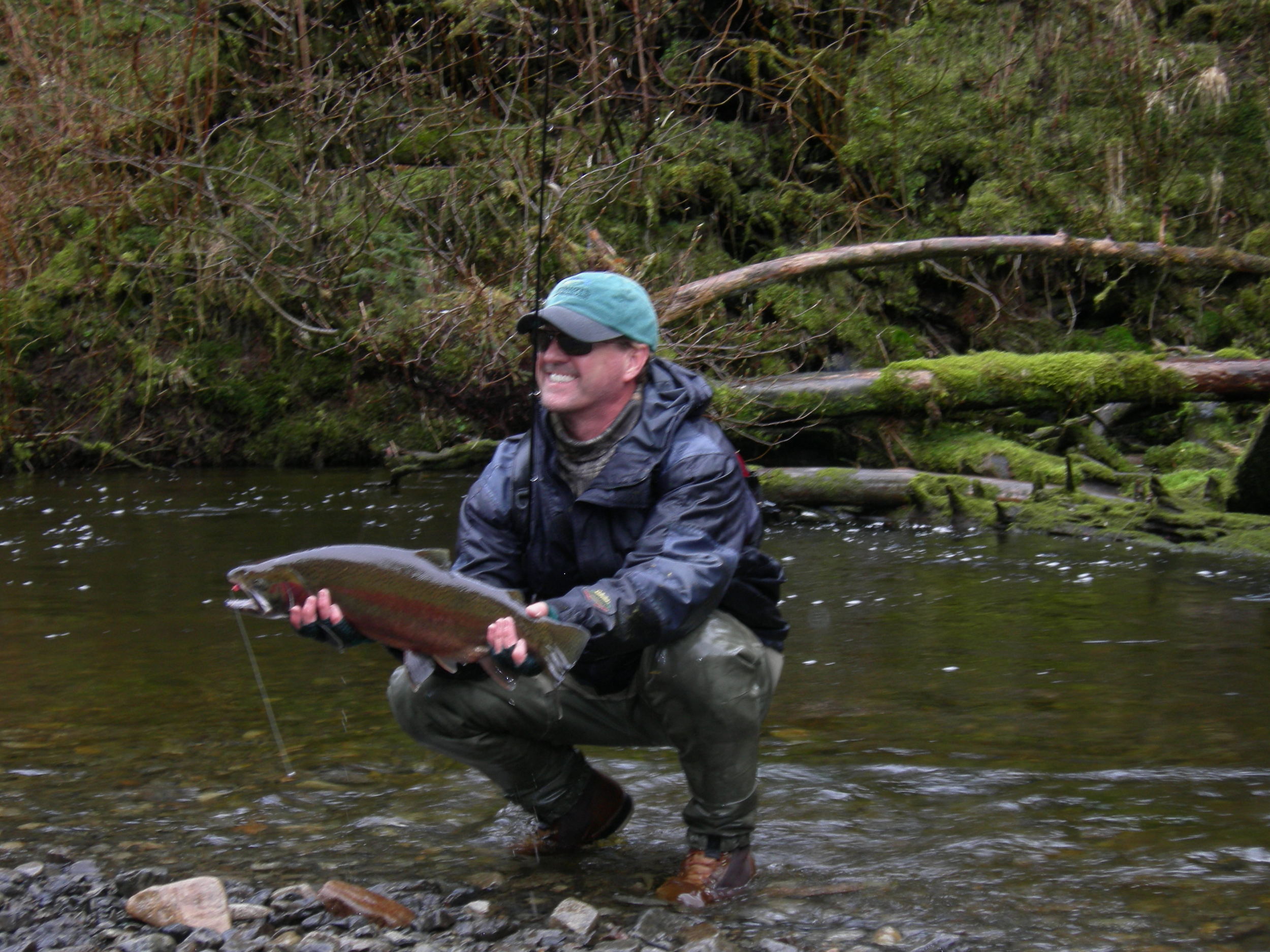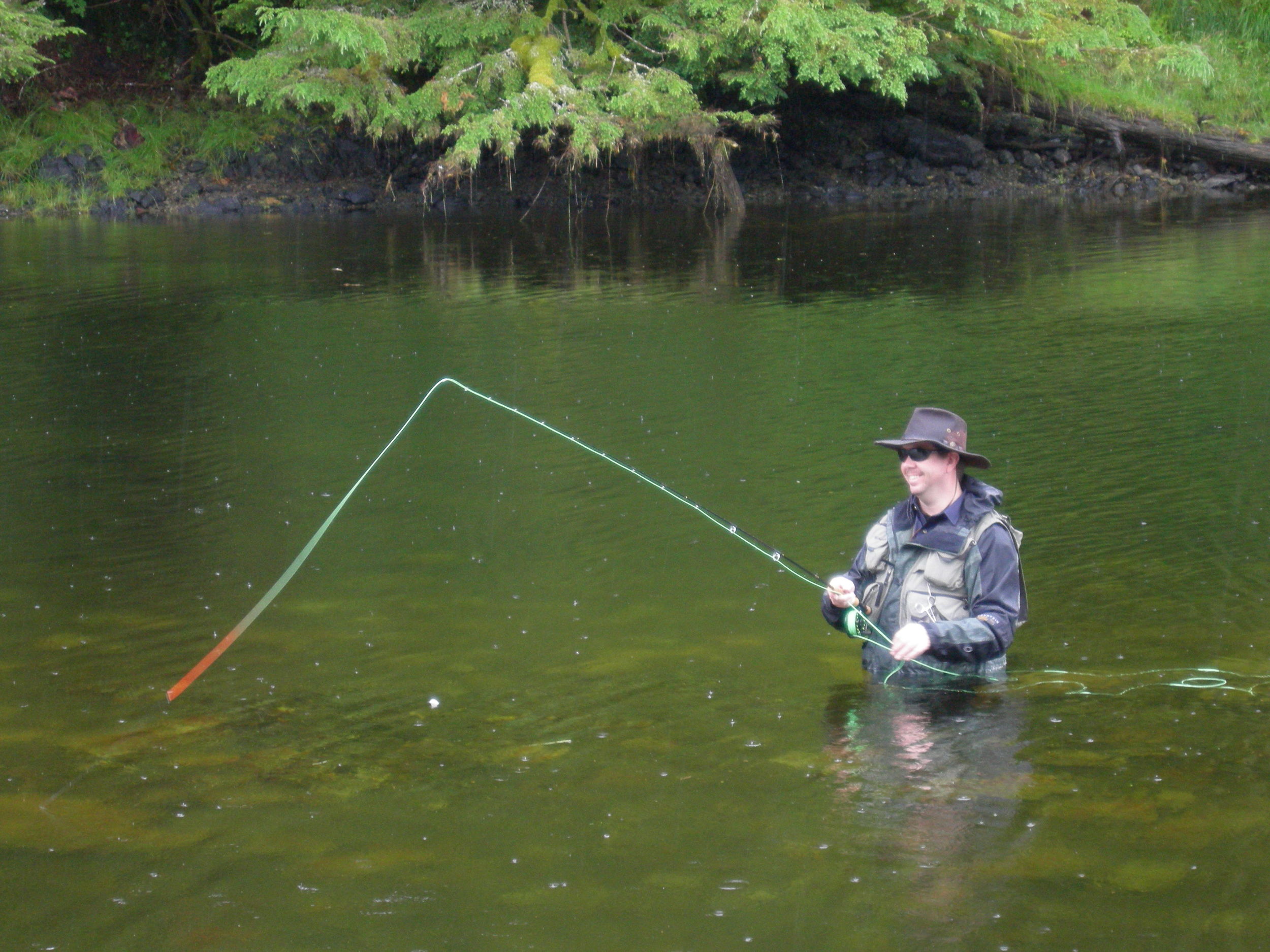Southeast Alaska Fishing Charters information
Fishing Area: the area we fish most often is 45-60 minutes from the lodge on the outside coast of Yakobi Island. This area is know as Deer Harbor and is the go-to fishing location for charter boats from Pelican, Elfin Cove and Gustavus as well as private boats from Juneau and yachts from all over the world. We just happen to be the closest fishing lodge to Deer Harbor in the area!
As you can see from the above map, Deer Harbor is exposed to the open ocean from the southwest and so fishing there is weather dependent. Not to worry, a benefit of our prime location is that we have plenty of great fishing in calm waters too. Inside of Cross Sound, Icy Strait and Lisianski Inlet the water is flat and while it's not the instant gratification that we usually find on the outside coast the fishing is still pretty good. Sometimes fishing close to the lodge in the flat calm water is more productive as less run time makes more fishing time.
Southeast Alaska King Salmon Fishing:
A nice Alaska king salmon, maybe 18 pounds.
Our area is well known for being some of the very best king salmon fishing in Alaska. Alaska Department of Fish & Game lists the front side of Yakobi Island as an "area of high king salmon abundance" which can be can be seen here on page 3 of this Alaska Department of Fish & Game, Division of Commercial Fisheries news release
http://www.adfg.alaska.gov/static/applications/dcfnewsrelease/63643062.pdf
if you don't have a PDF reader click this link (https://get.adobe.com/reader/)
June is best for kings but they are around all year and fishing is good for them May-September. We fish for king salmon in several ways depending on time of year, conditions and our guests preference.
Trolling: trolling for salmon is the technique that is most common in our area. Electric down riggers with 12 pound cannon ball weights get the gear down around 120-150'. Trolling speed is usually around 2-2.6 knots and our favorite gear consists of flashers with herring or hoochies and large copper or brass spoons. Trolling is nice in that it requires little physical effort allowing everyone to sit back and watch the rods. When a rod is bit the person whose turn it is leaps across the deck and sets the hook in a wild frenzy. Sometimes all the rods get hit at once and things really get out of hand! Trolling is a very effective way to fish for salmon and is also a good way to keep "scrap fish" off the lines. In our area there are a lot of rockfish and depending on the time of year, huge numbers of "humpie" or pink salmon. Trolling allows us to fish fast enough to keep the undesirable fish off the gear, leaving more hook time for the big kings!
Mooching: mooching is a great way to fish for salmon (and halibut) although it requires a little skill and constant activity. We either drift or anchor and drop cut plug herring or lead painted jigs down to depth mooching with long pulls, dropping the rod quickly so that there is slack in the line and the gear flutters convincingly down. You can also drop down to the bottom and reel up fast. The fish will generally bite as the lure or bait is falling, your line will go slack for a moment and that is your indication that it is time to set the hook. Setting the hook with the boat not moving you "feel the fish" much more than while trolling. Also, the lack of a flasher means having nothing between yourself and the fish which also helps in feeling the fish and allows the fish to fight harder as they are not pulling the flasher sideways through the water.
Regulations for king salmon are changed regularly depending on the number of fish biologists are seeing. Current regulations allow for one fish per day and only one fish per person for the year, the king salmon must be over 28" in length.
King salmon offer a recovery rate of about 55% and while we catch giant kings many of them are in the 16-18 pound range, so four-six decent kings will come close to filling a 50 pound box.
King salmon are an amazing eating fish and these kings are not heading to rivers to spawn so they are fatter and sweeter than kings you might catch in a river system after they have stopped feeding. The kings in our area of Northern Southeast Alaska come from different rivers along the west coast, British Columbia and Alaska.
Southeast Alaska Silver Salmon Fishing:
A nice pile of silvers caught in bear country mid-July
Silver salmon show up in the ocean around our area the last week of June and enter the rivers mid-July. They start out weighing around 4-5 pounds and gain one pound every two weeks throughout the summer. By late September the largest silver will weigh 24 pounds!
Silver salmon are a great fighting fish, they generally hang out in large schools and feed fiercely. When a silver bite is on in the ocean the action is wild and limits can be pulled quickly.
One of our favorite things to do is fish silvers in freshwater, or to be more accurate in the salt/fresh mix of the sloughs where rivers pour into the ocean. From mid-July on the silvers are entering freshwater. It is possible to fish the ocean in the morning and a different slough or creek for silvers each day. While fishing silvers with spin rods or fly rods can be very productive it also requires some work and skill and generally ocean fishing will fill the fish box faster. However, getting into some of these special places in the rainforest to fish for ocean bright silvers is a part of southeast Alaska that you won't want to miss.
Silver salmon regulations are six fish per person per day and they must be longer than 16". Silvers have a similar recovery rate to king salmon, they are good eating and with a four day limit of 24 fish your fish boxes will be getting full!
Southeast Alaska Halibut Fishing:
Halibut fishing in our area is very good, however, please note that we promote a conservation ethic and release the large spawning females.
Halibut are where you find them and a recent study using electronic tracking beacons has shown that halibut swim on average twice a day from 60’-600’. While many people think of halibut as a flounder that sits in sandy or muddy bottom and as relatively sedentary, these halibut are different, here they most commonly like a medium soft bottom of gravel and mud but are also often found in rocky areas or on steep side-hills, tops of pinnacles or just about anywhere you can imagine. We even catch them right off of our float in from of the lodge!
Halibut fishing is generally done by anchoring and soaking bait a few cranks off the bottom. It is important to keep your bait up off the bottom so the halibut can see it and so you don’t become tangled with other anglers as the boat swings side to side. Sometimes the halibut bites are instant but most often some patience is required as the scent of the bait leaves a trail the halibut may follow or they might just be cruising and eventually will come to the area we are fishing.
While we enjoy catching and releasing large halibut we are normally targeting fish in the 20 pound range as they eat the best and current regulations require us to release any halibut from 37-80”(22-267 pounds). The limit for halibut in this area is one per day per person smaller than 37” or larger than 80”. Even though they are legal to keep our policy is to let the 80+” halibut go to make more for the future.
We most often use circle hooks to fish for halibut and the technique is to let the halibut eat prior to setting the hook. The way circle hooks are designed the halibut swallows the bait and begins to swim away, dragging the hook in to the corner of its mouth where the hook sets like a piece of a puzzle. If you pull up too soon you will separate the bait from the hook and give the halibut a free tasty meal while coming up empty handed
Southeast Alaska Lingcod Fishing:
Lingcod are very numerous in our area and are an excellent eating fish. They are easily caught as they have huge mouths and will swallow just about anything. One of my favorite techniques for fishing lingcod is to catch a rockfish on a jig and leave it down there as live bait. Pretty quickly a giant ling will come along and grab the rockfish, then you reel up slowly until the lingcod is laying on the surface unwilling to let go of its prize. They will often roll like a crocodile in an attempt to kill their prey. One word of caution, don't attempt to grab hold of a lingcod as they have very sharp gills and teeth. Your guide knows the best way to deal with lingcod which is to wear gloves and softly lift them by the gill flaps without getting your hands in too deep. Done right a lingcod can be held up for a quick picture and released safely.
Current lingcod regulations in Northern Southeast Alaska for non-resident anglers are one daily per person annually with a size limit between 30-35" and one more lingcod annually if it is over 55". That's a huge lingcod but they are out there!
Lingcod are mostly head (we like to call them bucket heads) so the recovery rate is only about 35%. The meat is very good tho and they help fill the box!
Southeast Alaska Rockfish Fishing:
A nice yellow eye rockfish.
Rockfish are almost a pest in our area. If they didn't taste so good we would complain. However, the black rockfish or "black bass" as we like to call them and yellow eye rockfish are really premium fish! There are places we can go where the black bass are so thick they will swarm under the boat and actually leap in the air to take your gear! Any pinnacle or rocky ground will usually be covered in yellow eye, quill back, china or other numerous species of rockfish.
Regulations for rockfish are broken in to two categories, Pelagic rockfish which includes the black bass allows for 3 per day. Non-Pelagic rockfish which includes yellow eye allow for one fish per year. We have release mechanisms on board to get the rockfish back down to the bottom safely so they can be caught and released without harm.
Rockfish only yield around 30% recovery in two decent filets of crisp white meat but they also help to fill the boxes and offer some variety.
Please note that regulations change every year in confusing and sometimes very subtle ways. Sometimes they change mid-season with very little notice! Your guide keeps on his toes working hard to understand and comply with the ever increasing complexity of regulations and requirements.
Southeast Alaska Freshwater Fishing
Steelhead, rainbows, cutthroat, dolly varden, silvers, sockeye, pink, chum..
Many people come to fish southeast Alaska and go from the lodge to the boat, flog saltwater for 8 hours and back to the lodge each day with barely time to stop and view a whale or look for a brown bear on the beach never getting a chance to experience the forest and streams that make up the character of the country. We like to give our guests a well rounded experience in addition to filling their fish boxes so depending on time of year and your interest your guide can take you on an adventure in the rainforest hunting for trout, steelhead or salmon.
As discussed above the silver salmon begin entering fresh water mid July; also at that time the rivers fill up with sockeye, chum and pink salmon and along with them are dolly varden char that feed on salmon eggs. The rivers will be so thick with fish you could almost walk on them and its nice to get off the boat and stretch legs while exploring the tongass rainforest and possibly viewing brown bears, hopefully at safe distance! Your guide is armed and experienced with bear country so will make sure the area is safe and no one wanders in to bear trouble.
Earlier in the spring (late April, early May) we have steelhead and in May and June our lakes have good rainbow and cutthroat trout fishing. Getting to these fish requires some hiking and the only trails are game trails so you need to be in shape, but it's worth it to be out in the pristine Alaska wilderness where very few go.
If you'd like more detailed information regarding the fishing contact your guide, Denny Corbin.
Denny with a 53# king.
Denny has been fishing this area his entire life and is always happy to discuss Alaska and fishing!











